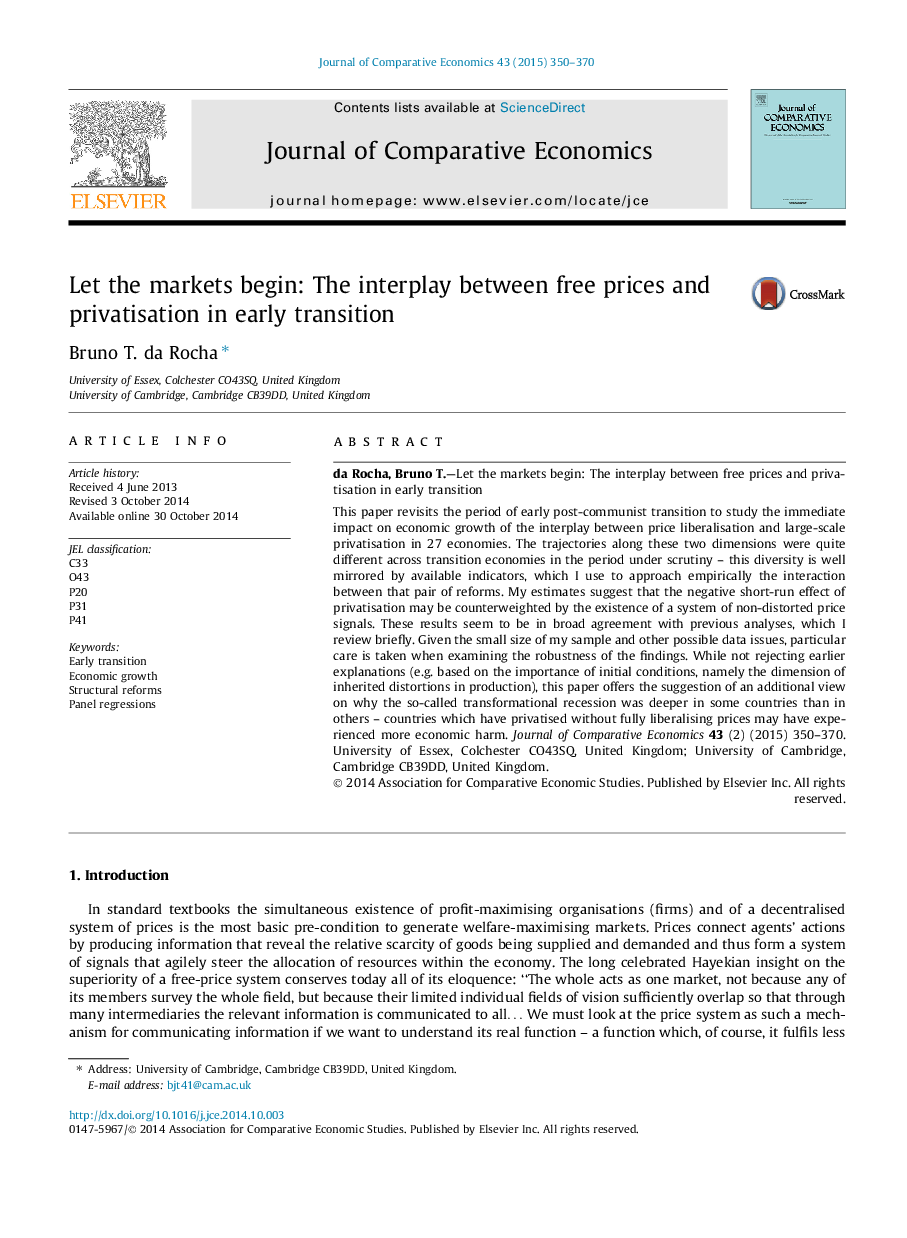| Article ID | Journal | Published Year | Pages | File Type |
|---|---|---|---|---|
| 5092170 | Journal of Comparative Economics | 2015 | 21 Pages |
Abstract
This paper revisits the period of early post-communist transition to study the immediate impact on economic growth of the interplay between price liberalisation and large-scale privatisation in 27 economies. The trajectories along these two dimensions were quite different across transition economies in the period under scrutiny - this diversity is well mirrored by available indicators, which I use to approach empirically the interaction between that pair of reforms. My estimates suggest that the negative short-run effect of privatisation may be counterweighted by the existence of a system of non-distorted price signals. These results seem to be in broad agreement with previous analyses, which I review briefly. Given the small size of my sample and other possible data issues, particular care is taken when examining the robustness of the findings. While not rejecting earlier explanations (e.g. based on the importance of initial conditions, namely the dimension of inherited distortions in production), this paper offers the suggestion of an additional view on why the so-called transformational recession was deeper in some countries than in others - countries which have privatised without fully liberalising prices may have experienced more economic harm.
Related Topics
Social Sciences and Humanities
Economics, Econometrics and Finance
Economics and Econometrics
Authors
Bruno T. da Rocha,
